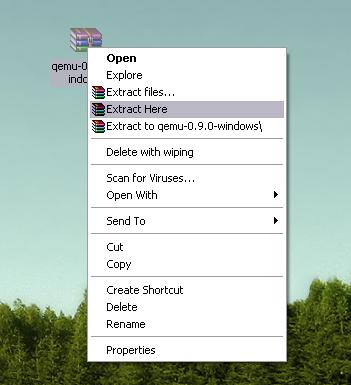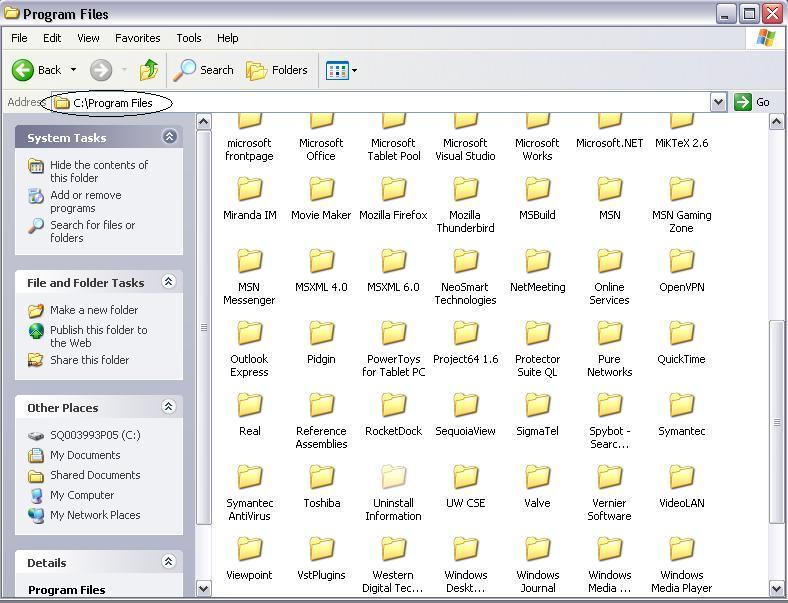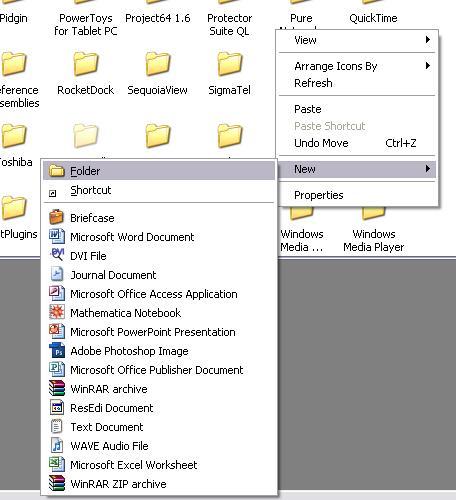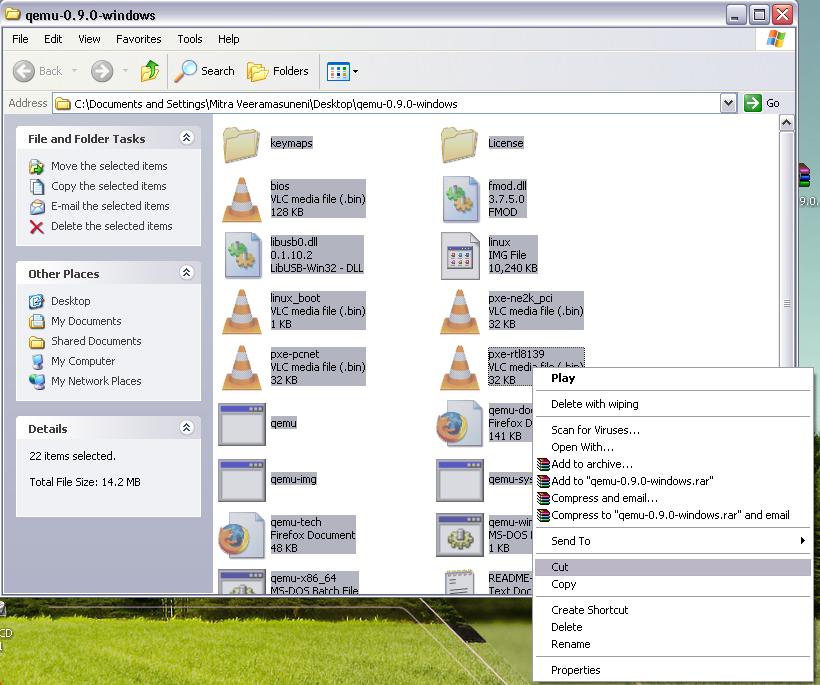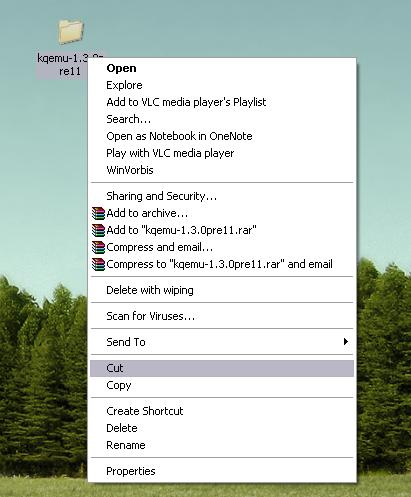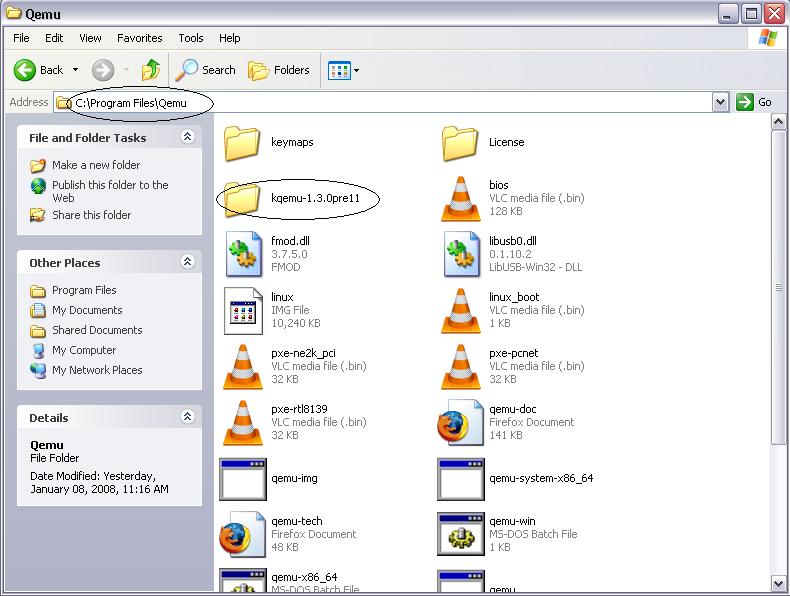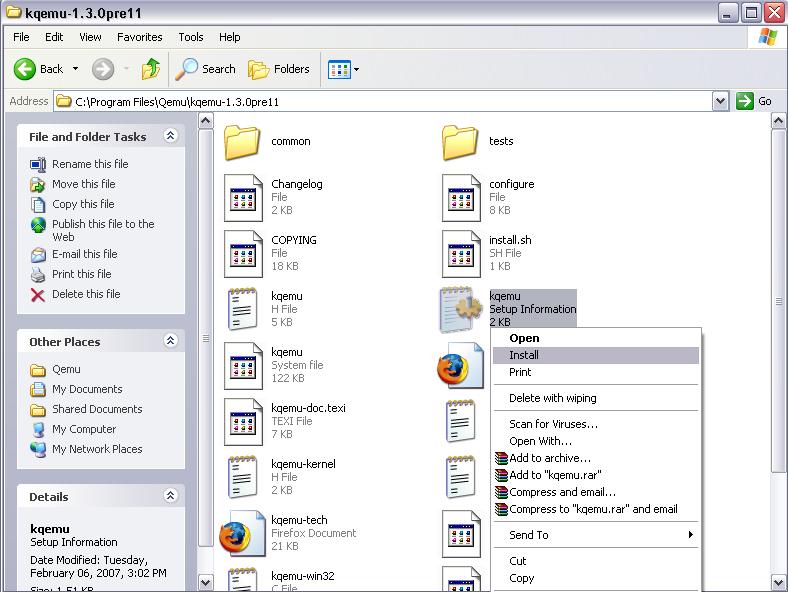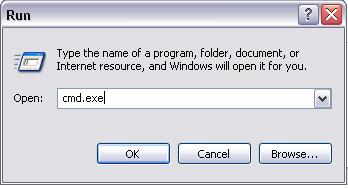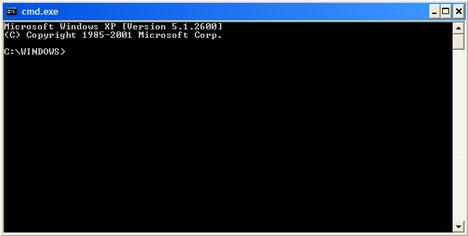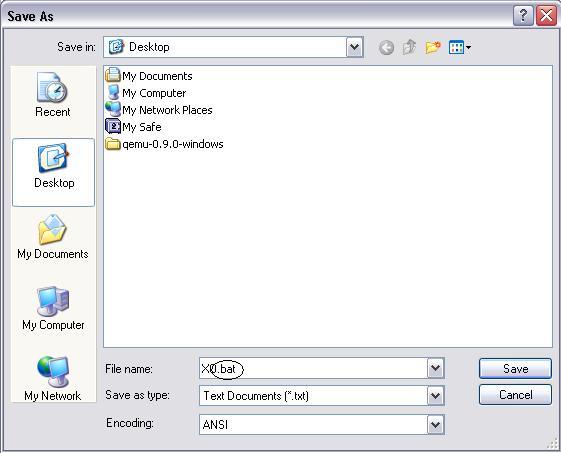Emulating the XO/Quick Start/Windows: Difference between revisions
(→Next steps: Mention PuTTY as an SSH client for new folks.) |
DanielDrake (talk | contribs) No edit summary |
||
| (20 intermediate revisions by 11 users not shown) | |||
| Line 1: | Line 1: | ||
<big><b><font color=red>For current information on emulation of OLPC software images, see [[Emulating the XO]]</font></b></big> |
|||
{{Deprecated}} |
|||
{{__TOCright__}} |
{{__TOCright__}} |
||
== |
==Installer for Windows== |
||
This instruction is meant for the first-time user who wants to try OLPC. Everything is included in a single download. |
|||
The Sugar Installer for Windows includes everything you need to run Sugar on a Windows based PC: An XO-1 image, the QEMU emulator, and KQEMU to speed up emulation. An uninstaller is also included. |
|||
===Assumptions=== |
|||
===Requirements=== |
|||
* Windows XP or Vista (Windows 2000 should work, not tested) |
* Windows XP or Vista (Windows 2000 should work, not tested) |
||
* About 1.5 GB free space on disk |
* About 1.5 GB free space on disk |
||
* Administration privileges on PC (as with any other software installation) |
* Administration privileges on PC (as with any other software installation) |
||
* Good Internet connection (you'll download |
* Good Internet connection (you'll download a 127 MB file) |
||
===Installation=== |
|||
Download and run the following setup file to install an 8.2.0 build using QEMU: |
|||
http://dev.laptop.org/~wadeb/OLPC-XO-Software-8.2.0-Setup.exe (127MB) |
|||
[ |
|||
] |
|||
Then go to the folder where the files got unpacked (on Windows XP that should be C:\Program Files\OLPC XO Software Release 8.2.0), right click on the file kqemu.inf and select "install" to install kqemu. |
|||
If you receive an error that you cannot install you can follow these steps: |
|||
''Note: if you are emulating an 8.2.0 build, see [[Talk:Emulating_the_XO/Quick_Start/Windows#8.2.0%20images|entries on the discussion page]] about known bugs for 8.2.0 builds in emulation.'' |
|||
1. "Start" -> "Run" -> enter 'cmd' |
|||
===Really quick steps=== |
|||
2. Change the directory to where the 'kqemu.inf' file is located |
|||
# Download http://slimak.onet.pl/_m/onetlajt/olpc/olpc_qemu_full.zip (232 MB) |
|||
> dir C:\"Program Files"\"OLPC XO Software Release 8.2.0"\ |
|||
#*Unfortunately this is from December 2007 and includes an old build from that time |
|||
3. Enter the command: |
|||
#*Newer (Sept 2008) OLPC builds use the 2.6.25 kernel which checks for the availability of AMD's 3DNow extension and if the kernel does not find them it refuses to boot. More recent QEMU and KQEMU code in [http://savannah.nongnu.org/svn/?group=qemu SVN] emulates the 3DNow instructions. A newer Windows binary build of QEMU is available from the [http://n2.nabble.com/Emulating-8.2-images-on-QEMU-for-windows-td1115692.html OLPC forum at Nabble]. A bundle with the new components is also available for testing from the [[Talk:Emulating_the_XO/Quick_Start/Windows#New_Quick_Start_bundle_for_emulating_8.2.0_and_later_images...|discussion page]]. |
|||
> rundll32 syssetup,SetupInfObjectInstallAction DefaultInstall 128 .\kqemu.inf |
|||
# Double-click the file — it should open compressed file contents which is one directory, called '''olpc''' |
|||
# Drag and drop this "olpc" directory somewhere, '''c:\''' recommended, but you can use different directory for that. |
|||
# Enter olpc directory and double-click '''start_olpc.cmd''' (if you are running Windows Vista, you should instead right-click the file and select '''Run as administrator'''). |
|||
#*This script will install the KQEMU accelerator (if not already installed), start it, and start the qemu emulator running the <tt>.img</tt> file in the directory. |
|||
#*The <tt>rundll32 ...</tt> command in the <tt>start_olpc.cmd</tt> script that installs KQEMU can also install the newer kqemu-1.4.0pre1 |
|||
# Enjoy! |
|||
==Next steps== |
==Next steps== |
||
| Line 65: | Line 76: | ||
This is one method of installing Kqemu. If it doesn't work, try option 2 below. |
This is one method of installing Kqemu. If it doesn't work, try option 2 below. |
||
* First, download the the module from [http:// |
* First, download the the module from [http://wiki.qemu.org/Download here]. The stable version is kqemu-1.3.0pre11. Click on the link provided, and download the file to your desktop. As before, extract the files to the desktop by right-clicking on the file, and hitting "Extract Here". This time, instead of going into the folder and cutting all of the files separately, cut the entire folder at once, and paste it into your Qemu Program Files Folder. |
||
[[Image:Foldercut.jpg]] |
[[Image:Foldercut.jpg]] |
||
| Line 138: | Line 149: | ||
=== Easily starting up the emulation === |
=== Easily starting up the emulation === |
||
One problem with this method is that every time that you wish to run the emulation, you will need to open up the Command Prompt and type in the long command lines shown above. |
|||
You can create a .bat file which will run the commands for you with one click . |
|||
In order to do this |
|||
* |
* open up your "Notepad" which can easily be opened by opening the "Run" dialog and typing in "notepad". |
||
* Then in Notepad type in this code: |
|||
cd "\Program Files\Qemu" |
cd "\Program Files\Qemu" |
||
qemu -L . -m 256 -kernel-kqemu -soundhw es1370 -net user -net nic,model=rtl8139 -hda olpc-redhat-stream-update.1-build-657-20071212_1519-devel_ext3.img |
qemu -L . -m 256 -kernel-kqemu -soundhw es1370 -net user -net nic,model=rtl8139 -hda olpc-redhat-stream-''update.1-build-657-20071212_1519''-devel_ext3.img |
||
pause |
pause |
||
: replacing the long name of the <tt>devel_ext3.img</tt> file with the name of the image you downloaded. |
|||
* It should look like this: |
* It should look like this: |
||
[[Image:Bat.jpg]] |
[[Image:Bat.jpg]] |
||
* Now, go to File > Save and name it |
* Now, go to File > Save and name it, say <tt>XO.bat</tt>: |
||
[[Image:Saveas.jpg]] |
[[Image:Saveas.jpg]] |
||
* Save this file to your desktop and you can now click on this file at any time to run the OLPC Emulation. |
* Save this file to your desktop and you can now click on this file at any time to run the OLPC Emulation. |
||
[[Getting started]] will help you get oriented, though you may not need it. |
|||
Note: when you see the |
Note: when you see the OX icon in the center of the screen, Sugar has started. Enter you name and move the cursor to one of the corners to see the menus of sugar. |
||
You can also get other [[Emulating the XO/Help and tips|Help and tips]] on emulating Sugar. |
You can also get other [[Emulating the XO/Help and tips|Help and tips]] on emulating Sugar. |
||
When running under emulation, the sugar fonts will appear very tiny until you [https://dev.laptop.org/ticket/3681 set the screen to 200 dpi]. |
When running under emulation, the sugar fonts will appear very tiny until you [https://dev.laptop.org/ticket/3681 set the screen to 200 dpi]. ''still true'' |
||
== Other notes == |
== Other notes == |
||
Latest revision as of 16:14, 8 February 2011
For current information on emulation of OLPC software images, see Emulating the XO
Installer for WindowsThe Sugar Installer for Windows includes everything you need to run Sugar on a Windows based PC: An XO-1 image, the QEMU emulator, and KQEMU to speed up emulation. An uninstaller is also included. Requirements
InstallationDownload and run the following setup file to install an 8.2.0 build using QEMU: http://dev.laptop.org/~wadeb/OLPC-XO-Software-8.2.0-Setup.exe (127MB) [ ] Then go to the folder where the files got unpacked (on Windows XP that should be C:\Program Files\OLPC XO Software Release 8.2.0), right click on the file kqemu.inf and select "install" to install kqemu.
1. "Start" -> "Run" -> enter 'cmd'
2. Change the directory to where the 'kqemu.inf' file is located
> dir C:\"Program Files"\"OLPC XO Software Release 8.2.0"\
3. Enter the command:
> rundll32 syssetup,SetupInfObjectInstallAction DefaultInstall 128 .\kqemu.inf
Next steps
Quick start - step by step instructionsQEMU
KQEMU
KQEMU on WindowsThis is one method of installing Kqemu. If it doesn't work, try option 2 below.
net start kqemu
The KQEMU virtualisation module for QEMU service was started successfully. Getting an OLPC image
The final steps
cd "\Program Files\Qemu" qemu -L . -m 256 -kernel-kqemu -soundhw es1370 -net user -net nic,model=rtl8139 -hda (image name here, without these brackets)
Easily starting up the emulationOne problem with this method is that every time that you wish to run the emulation, you will need to open up the Command Prompt and type in the long command lines shown above. You can create a .bat file which will run the commands for you with one click . In order to do this
cd "\Program Files\Qemu" qemu -L . -m 256 -kernel-kqemu -soundhw es1370 -net user -net nic,model=rtl8139 -hda olpc-redhat-stream-update.1-build-657-20071212_1519-devel_ext3.img pause
Getting started will help you get oriented, though you may not need it. Note: when you see the OX icon in the center of the screen, Sugar has started. Enter you name and move the cursor to one of the corners to see the menus of sugar. You can also get other Help and tips on emulating Sugar. When running under emulation, the sugar fonts will appear very tiny until you set the screen to 200 dpi. still true Other notesIf qemu responds with an error like "qemu: could not load PC bios '/c/Program Files/Qemu/bios.bin'" when trying to run it in the command prompt then you may have to use qemu's -L option to specify the directory where you installed qemu, which contains the bios.bin file. If you're using a 64 bit processor, you need to run the command 'qemu-system-x86_64' instead of 'qemu'. Note that qemu by default gives 128 MB RAM, but according to Hardware_specification recent XO HW have 256 MB, that's why the "-m 256". To test for early XO HW (or later with more), change the -m param. Giving 256 MB RAM appears to have a noticeable effect on speed in the emulator (as I'm sure in the real HW ;)). You should now have a running "virtual XO" |

